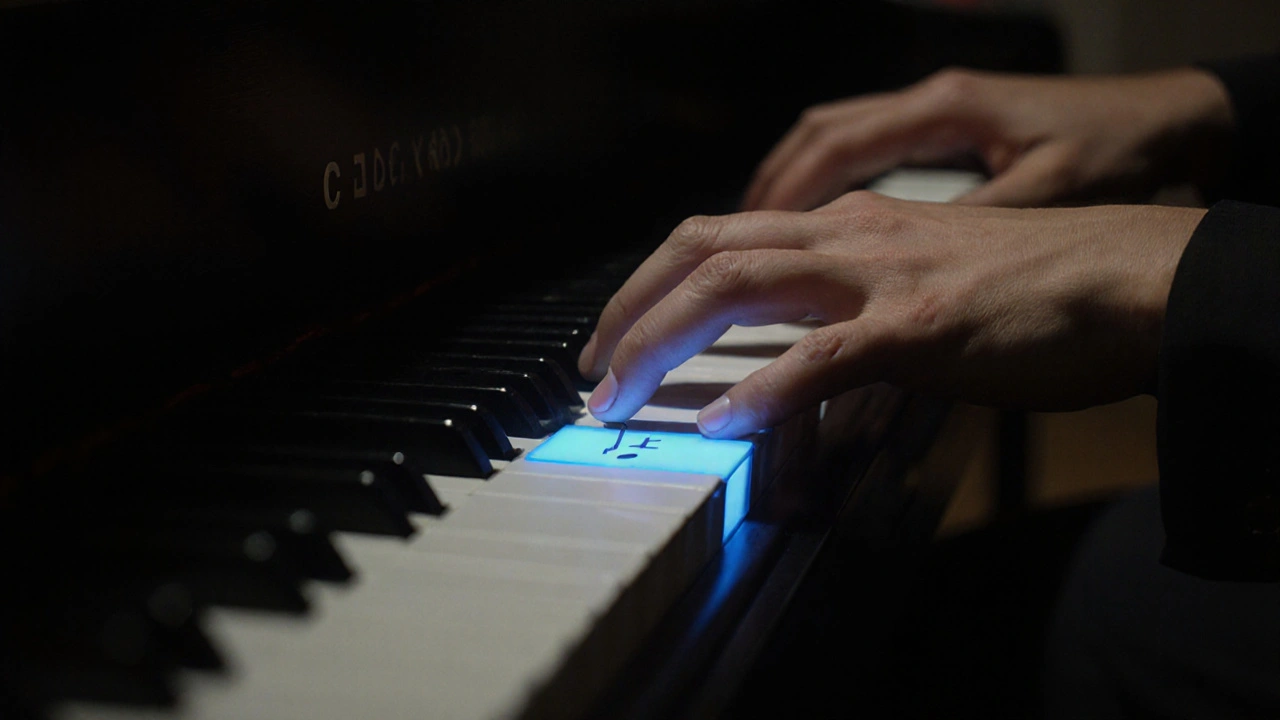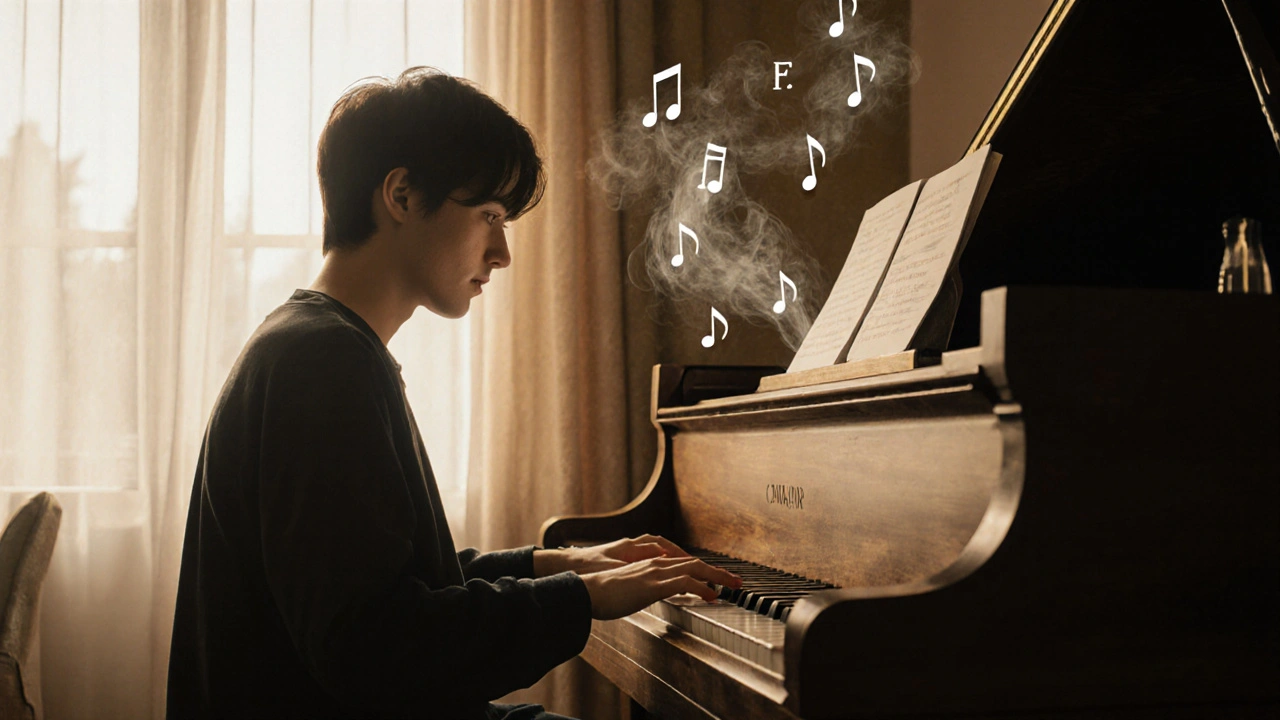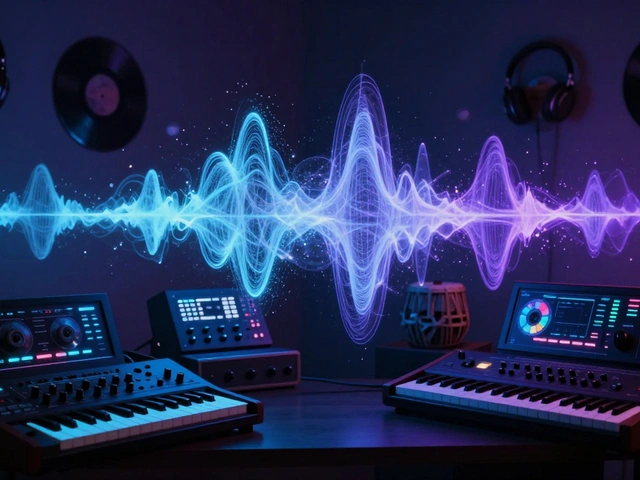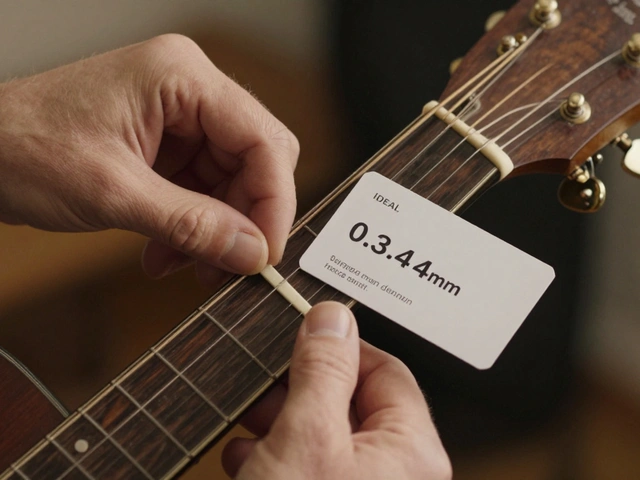Piano Improvisation Starter Simulator
Explore Basic Improvisation
Start with just three chords and one scale. Listen carefully and experiment with rhythm and note choices.
Your Improvisation
Most people think piano improvisation is something only jazz legends like Bill Evans or Oscar Peterson could do. But here’s the truth: piano improvisation isn’t magic. It’s a skill built from patterns, listening, and practice - not talent. You don’t need to read sheet music perfectly. You don’t need years of classical training. You just need to start playing with intention.
What Piano Improvisation Really Is
Piano improvisation is the act of creating music on the spot - not from a score, but from your ears, your fingers, and your feeling. It’s not random noodling. It’s structure with freedom. Think of it like speaking a language. You don’t memorize every sentence before you talk. You learn words, grammar, and rhythm - then you build sentences as you go.
When you improvise on piano, you’re using scales, chords, and rhythmic patterns as your vocabulary. A C major scale? That’s your alphabet. A C major 7 chord? That’s a word. The way you connect them? That’s your sentence.
Many beginners try to improvise by playing random notes and get frustrated when it sounds messy. That’s because they skip the foundation. Improvisation isn’t about playing more notes. It’s about playing the right ones at the right time.
Start With Just Three Chords
You don’t need to know 50 chords to start improvising. Start with three: C major, G major, and F major. These form the I-IV-V progression - the backbone of pop, blues, rock, and jazz. Play them in a simple loop: C → F → G → C. Do it slowly. Feel how each chord changes the mood.
Now, play only the notes in the C major scale (C, D, E, F, G, A, B) over that progression. Don’t think about what to play. Just let your fingers explore. Try holding a single note - say, G - while the chord changes from C to F. Notice how the same note sounds different over each chord. That’s the secret: context changes meaning.
Most piano students skip this step because it feels too simple. But this is where real learning happens. The goal isn’t to sound impressive. It’s to hear how music works.
Learn the Blues Scale - Your First Improvisation Tool
Once you’re comfortable with basic chords, add the blues scale. It’s the most powerful tool for piano improv. In C, it’s: C, E♭, F, G♭, G, B♭, C. That’s six notes. That’s all you need to start sounding like a seasoned player.
Play the C blues scale over a C7 chord (C, E, G, B♭). Notice how the E♭ and G♭ create tension - that’s the blues sound. You don’t need to play fast. Play one note, hold it, let it breathe. Then move to the next. Try this: play C, pause, then E♭, pause, then G. That’s three notes. That’s a phrase.
Listen to Ray Charles or Otis Redding. Their piano players didn’t run up and down the keyboard. They used space. Silence is part of the music. You don’t have to fill every second.
Copy What You Love - Then Change It
Every great improviser started by copying. Not to steal - to understand. Find a short piano solo you love - even just 4 bars. Play it slowly. Learn it note for note. Then change one note. Swap a B for a B♭. Stretch a rhythm. Add a rest. Now it’s yours.
For example, take the opening of “Autumn Leaves” (Joseph Kosma). Play the melody. Then play it using only the chord tones (the notes that make up the chord). Now play it with added passing tones. You’ve just improvised.
This method works because you’re not starting from zero. You’re building on something you already feel. It’s like learning to draw by tracing - then drawing your own version.

Use Rhythm to Create Movement
Many pianists focus only on pitch - which notes to play. But rhythm is just as important. Two identical notes played with different rhythms sound completely different.
Try this exercise: Play a C major chord with your left hand. With your right, play just one note - say, E - but change the rhythm each time:
- Quarter note (long)
- Two eighth notes (short-short)
- Syncopated: play on the “and” of beat 2
- Dotted quarter + eighth
Now do the same with F and G. You’ve created four different phrases using one note. That’s improvisation. It’s not about complexity - it’s about intention.
Play Along With Recordings
One of the fastest ways to improve is to play along with songs you know. Put on a jazz standard like “All the Things You Are” or a pop song like “Let It Be.” Play the chords in your left hand. Use your right hand to echo the melody - or break it apart. Add a passing note. Delay a note by half a beat. Make mistakes. That’s the point.
Don’t worry about matching the recording perfectly. Just match the feel. If the song is slow, play slow. If it’s bouncy, play with energy. Your ears will start to guide you. That’s the goal: to let your ears lead your fingers.
Build a Personal Vocabulary
Improvisation isn’t about inventing something new every time. It’s about having a small set of go-to phrases you can rearrange. Think of them like your favorite sentences in a language.
Here are three simple patterns to memorize:
- Chord tone → step up → chord tone (e.g., C → D → E over a C chord)
- Descending three-note pattern: G → F → E
- Blue note slide: E → E♭ → D
Practice these in every key. Play them over different chords. Now you have tools you can use anytime. When you’re stuck, fall back on one of these. Then build from there.

Stop Thinking - Start Listening
The biggest blocker to piano improvisation is overthinking. You’re trying to remember scales, chord symbols, fingerings - and you forget to listen.
Try this: Play a chord. Close your eyes. Wait three seconds. Then play one note. Don’t plan it. Just let your ear choose. Did it feel right? Did it feel wrong? That’s your guide. Your ear knows more than your brain.
Improvisation isn’t about having the right answer. It’s about asking the right question. And the only way to learn the question is to listen - deeply.
Practice Like a Musician, Not a Student
Most people practice piano by repeating exercises until they’re perfect. Improvisation doesn’t work that way. You don’t need to play perfectly. You need to play consistently.
Set a timer for 10 minutes a day. Pick one chord progression. Play it. Improvise. Don’t stop. Don’t judge. Just play. Even if it sounds bad. Bad practice is better than no practice.
After a week, you’ll notice something: your fingers start to move without you thinking. That’s muscle memory. That’s freedom.
Where to Go From Here
Once you’re comfortable with basic chords and the blues scale, explore:
- Minor keys - try D minor and A minor progressions
- Adding sevenths - C7, F7, G7 open up new colors
- Walking bass lines - play root-fifth-seventh-third in your left hand
- Playing with a metronome - start at 60 BPM, then go slower
Listen to piano players who improvise: Bill Evans for emotion, Thelonious Monk for rhythm, Chick Corea for harmony. Don’t copy them - learn how they think.
And remember: the goal isn’t to sound like a professional. It’s to sound like you.
Frequently Asked Questions
Do I need to know music theory to improvise on piano?
No - but knowing a little helps. You don’t need to name every chord or scale. Just learn the major scale, the blues scale, and how to build triads. That’s enough to start. Theory is a map, not the journey. Play first, understand later.
How long does it take to get good at piano improvisation?
You can start sounding musical in two weeks with 10 minutes a day. Getting comfortable takes 3-6 months. Becoming fluent takes years - but you’ll feel progress every week. The key isn’t time. It’s consistency. Play every day, even if it’s just one chord and three notes.
Can I improvise on a digital piano or keyboard?
Yes - absolutely. The type of piano doesn’t matter as much as how you play. A digital piano with weighted keys is ideal, but even a basic keyboard works. What matters is that you can feel the keys and hear the sound clearly. Use headphones if you need to practice quietly.
What if I make mistakes when improvising?
There are no mistakes - only surprises. If you play a note that doesn’t fit, hold it. See how it changes the sound. Sometimes the ‘wrong’ note becomes the most interesting part. Improvisation is about exploration, not perfection.
Should I learn jazz to improvise on piano?
Not necessarily. Jazz is one path - but you can improvise in pop, rock, blues, or even classical styles. Start with the blues scale and simple chord progressions. That works for any genre. Jazz gives you more tools, but you don’t need them to begin.





